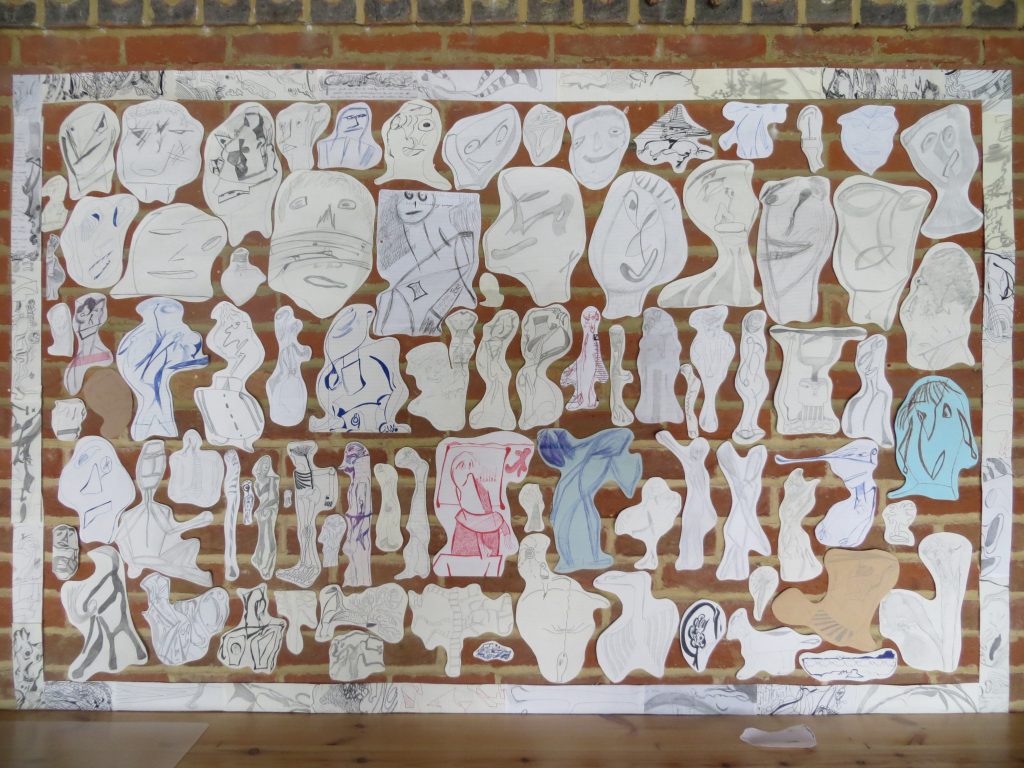Yesterday I finished the sorting and scanning work on all the scribbles. As anticipated, detailed scrutiny of my reflective writings from forty-plus years ago in order to understand their contents and to date them, was an uncomfortable exercise. However, there is no doubt that having the mission to organise, index and scan the material gave the exercise a focus which made it easier to grapple with the contents. In the process of going through each item I found further instances in which I had remembered false versions of events (as mentioned in my previous entry), as well as coming across at least one instance of an event that I had completely forgotten about. Such is the potential fallacy of our memories and the value of the written record, though, of course, there is no guarantee a written record is not incorrect or designed to be deliberately misleading. Hence the need to apply a critical mind to all sources of information – I assume this is a fundamental lesson which is drummed into all historians
One of the great advantages of digitising things is that it provides a halfway house between keeping originals and destroying them. I felt this was particularly advantageous for all the highly personal scribblings I have been dealing with. Having been through them all, there was no doubt in my mind that I needed to get rid of this pile of many-shaped and scrawled-upon bits of paper – no-one but me would ever want to go through them all, and I myself did not really want the evidence of my younger turmoils lying around. However, the material is very much part of me and conveys an intimacy with my past that I could never reproduce from my consciousness. Therefore, the ability to both tear up the paper into small enough bits as to be unreadable and throw them away, while, at the same time, having them hidden away in the depths of my computer – but indexed, labelled, and accessible – left me with a feeling of relief and accomplishment.
In my previous work on Mementos, I developed a ‘Wish Table’ spreadsheet to identify why I was keeping specific items and what should be done with them after my death – options for the latter being keep (K), destroy (D), and keep or destroy (KorD). I completed a Wish Table for the scribble items as I went through them and, interestingly, while ruling out a K designation, I found it hard to choose between D and KorD. In principle, because this stuff is so personal, I should really want it destroyed so no-one else can read it. However, there’s a little part of me that thinks it would be such a shame to destroy something that’s taken some effort to organise and digitise; that combines with the mementos and other digitised material to represent a whole picture of me; and that really takes so little effort to just keep in electronic form as part of the overall collection. I guess that when I initially came up with the Destroy option I was thinking that my offspring wouldn’t want to keep things that are of no interest to them i.e. more of a ‘Discard’ option. Wanting things to be destroyed because you don’t want them to be read downstream is a completely different rationale. I think I’ll extend the Wish Table Template accordingly. As to whether I decide to choose the Destroy option for this material – well I’m still pondering that.
With all the digitising complete and most of the paper thrown away, I just have the doodle hardcopy left to play with. I’ve been looking forward to seeing if I could do anything artistic with the doodles – perhaps by assembling them together in a very large overall picture. One possibility might be to have all the figures I have drawn (many of the doodles are of strange alien looking people) all assembled in front of a Stately Home as if having their picture taken. This shall be my next exploit.

